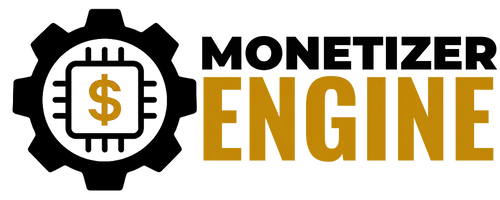
Friday Fast Tip: Your First Hire Should Be a System, Not a Person
When launching a business, many entrepreneurs think the first step toward growth is hiring a person. But at MonetizerEngine, we’ve seen how costly and risky premature hiring can be. Instead, your smartest first “hire” should be a system.
Systems — not people — should handle your business’s earliest repetitive tasks. By hiring a system first, you build consistency, scalability, and efficiency into your company before adding salaries, benefits, and management responsibilities.
Here’s how to rethink your first hire and build a business designed to grow.
Step 1: Why Systems Beat People in the Early Stages
Before you dive into payroll, HR, and compliance headaches, look at the advantages systems give you:
Consistency: Systems create repeatable processes and minimize errors.
Scalability: Technology adapts to growing demand more easily than a new hire.
Lower Costs: No salaries, insurance, or payroll taxes.
Simpler Onboarding: When you do hire humans, systems make training faster.
Example: Automated Customer Support
Instead of hiring a customer service rep, a startup can implement an AI-powered helpdesk. It responds instantly, scales with demand, and never takes a sick day.
Quick Action:
Identify your most time-consuming tasks.
Research automation platforms that solve them.
Start small with one system that’s easy to expand.
Step 2: The Risks of Hiring Too Soon
Hiring without systems in place doesn’t just add costs — it creates distractions. Founders who hire early often spend more time managing people than building their business.
The risks include:
Compliance Overhead: Payroll, taxes, workers’ comp, and benefits.
Training Challenges: Employees require structure that doesn’t exist yet.
Resource Strain: Salaries drain cash flow before revenue stabilizes.
Example: Premature Hiring Gone Wrong
We’ve seen startups hire developers or assistants too early. Without defined systems, founders spent valuable hours managing instead of refining their product or service. The result? Slowed growth and wasted budget.
Avoiding This Mistake
Delay hiring until roles are defined by existing systems.
Use freelancers for temporary work.
Let automation validate demand before expanding your team.

Step 3: Leverage AI and Automation Tools
Today’s automation tools and AI agents allow startups to operate leaner than ever. These systems replace the need for early hires in key areas like sales, content creation, and analytics.
Example: AI in Marketing
Instead of hiring a marketing assistant, founders use AI to create blogs, social media content, and automated email campaigns. The result: more content, less overhead, and humans freed up for strategy.
Tools We Recommend at MonetizerEngine
Content & Copy: Jasper, Copy.ai, Writesonic.
Analytics: Google Looker Studio, AI dashboards.
Client Management: CRMs with built-in automation (HubSpot, ActiveCampaign).
By deploying the right tools, you keep operations running smoothly without rushing to hire prematurely.
Step 4: Know When It’s Time for Your First Human Hire
Eventually, people will be essential. But by the time you’re ready, your systems will handle repetitive tasks, making your first hire focused and strategic.
Example: Smart Hiring After Systems
A retail startup automated billing and inventory management. When they hired their first employee, it wasn’t a cashier — it was a financial analyst to interpret system data and guide growth decisions.
How to Prepare for Hiring Humans
Review your system data to identify gaps only humans can fill.
Write clear job descriptions around supporting systems.
Hire only when cash flow can comfortably cover payroll and benefits.
Conclusion: MonetizerEngine’s System-First Rule
Your first hire shouldn’t be a person — it should be a system. At MonetizerEngine, we help businesses implement automation stacks that scale, validate, and reduce risk before adding headcount.
By putting systems first, you build a foundation that supports smarter, more strategic hiring later.
Fast Action: Write down three repetitive tasks you handle weekly. Research one automation tool today that could replace one of them. That’s your real first hire.
Downloadable PDF
MonetizerEngine’s First Hire Framework
What’s Inside:
A checklist for spotting system-first opportunities.
Cost comparisons: systems vs. employees.
Steps to validate systems before hiring humans.
Download the First Hire Framework
Scale Smart with MonetizerEngine
Don’t let premature hiring drain your resources. MonetizerEngine helps you build the automation stack that acts as your first hire, cutting overhead and accelerating growth.
Work with MonetizerEngine to Design Your Automation Stack Today
FAQs
Q1: Why should my first hire be a system instead of a person?
A1: Systems cut costs, reduce risk, and create consistency before adding employees.
Q2: What systems are best for startups?
A2: Automation tools for support, billing, marketing, and analytics are the best first hires.
Q3: Can I use freelancers instead of systems?
A3: Freelancers help short-term, but systems provide scalability and lower long-term costs.
Q4: When should I hire my first employee?
A4: Once systems are running smoothly and you can afford payroll, hire for roles that need human judgment.
Q5: How do I choose the right first system?
A5: Start with repetitive, time-consuming tasks you can automate quickly (like customer service or email).

